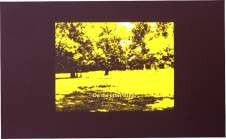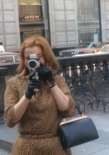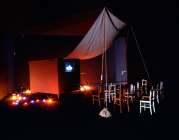The first solo exhibition in Ireland by the Portuguese artist João Penalva presents a selection of installations and videos created over the past decade. Many of the works involve superimposing objects with fragmentary narratives, reflecting the supreme importance of language as a medium in Penalva’s varied and meticulously-crafted body of work. The complex webs of meanings which he creates are used to explore the way in which culture is categorised and presented, largely through a process-based approach employing collection, detection, translation and documentation.
Comprising some 30 works, João Penalva ranges from Wallenda, 1997-98, depicting the artist’s heroic feat of whistling the complete score for Stravinsky’s monumental Rite of Spring, to the much gentler Kitsune, 2001, with its delicate imagery of pine trees in a foggy landscape accompanied by a reflective, hypnotic narrative. Penalva started his career as a dancer, and the gestures associated with performance retain their importance in his work. In an interview in the exhibition catalogue, he explains that his “language is, and always has been, a theatrical one”. In his 1999 film Mister, set in an old caravan, a shoe takes to the stage to discourse – in declamatory tones and with Beckett-like absurdity – on illness, faith, medicine and death, including quotations from that last refuge of the afflicted, The Book of Job.
Born in Lisbon, João Penalva studied ballet in the early 1970s at the London Contemporary Dance School, where he was particularly interested in the ideas and techniques of Merce Cunningham. He later worked with other choreographers, including Jean Pomares and Pina Bausch. In 1976 he turned from dance to painting, enrolling in the Chelsea School of Art. At this time he was particularly influenced by the work of Jasper Johns and Robert Rauchenberg, in whose paintings he saw something of the “purity” of Cunningham’s choreography. From the early 1990s the use of texts and narratives became increasingly fundamental to his art, which has always been characterised by the desire to explore new possibilities.
The exhibition is organised in association with the Serralves Museum of Contemporary Art, Porto, Portugal, and the Ludwig Museum, Budapest, where it has already been shown. A catalogue and exhibition guide accompany the exhibition.
The exhibition is supported by the Instituto Camöes, Portugal.
Related Links
Press Release
A Limited Edition print by João Penalva is available to buy, please follow the link to IMMA Edition: João Penalva


